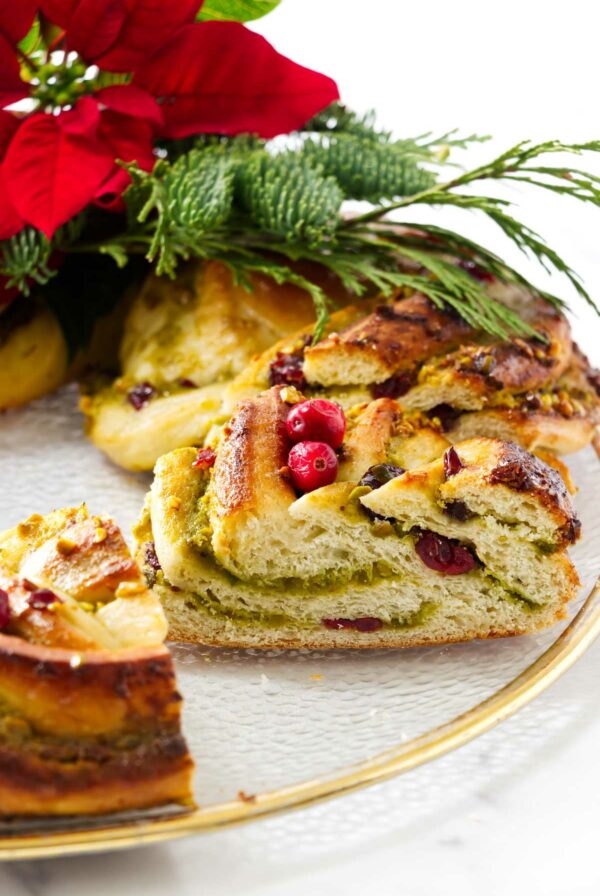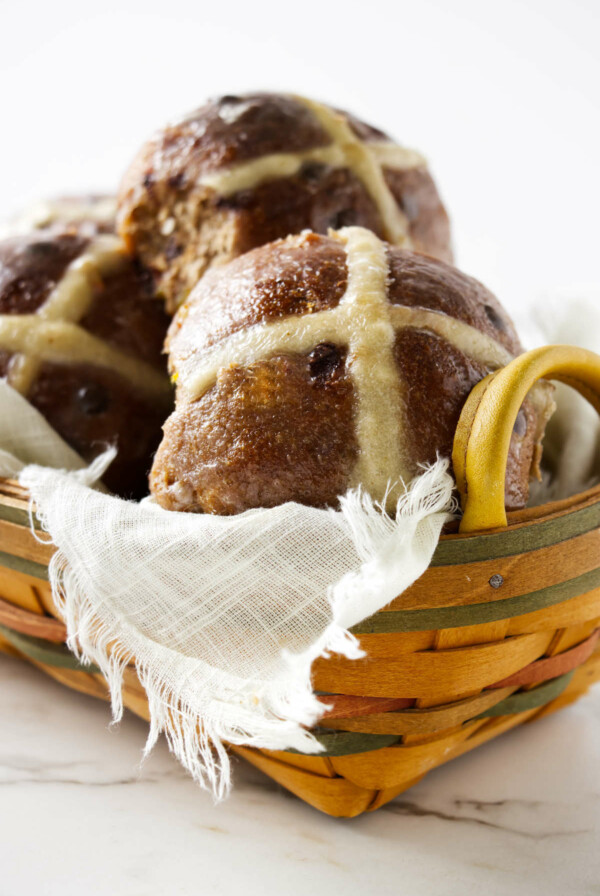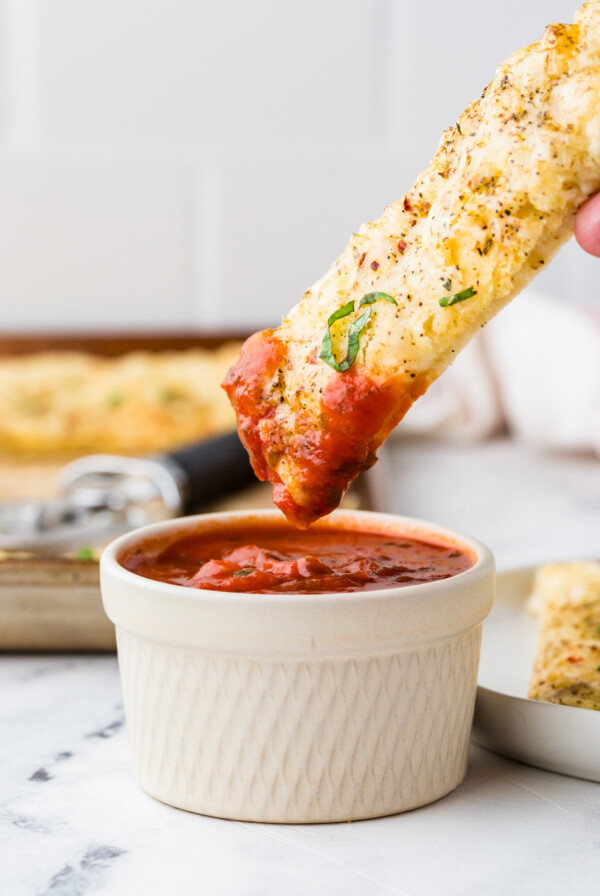This post may contain affiliate links. Please read our disclosure policy. As an Amazon Associate, I earn from qualifying purchases.
No knead cinnamon raisin bread is soft, swirled, and deeply fragrant. The dough comes together in minutes (no kneading, no mixer) and bakes in a Dutch oven for a golden crust and even rise. Raisins stay plump, and the cinnamon-sugar swirl melts just enough to cling to the crumb without getting lost. Slice it thick and the crust crackles as you cut.
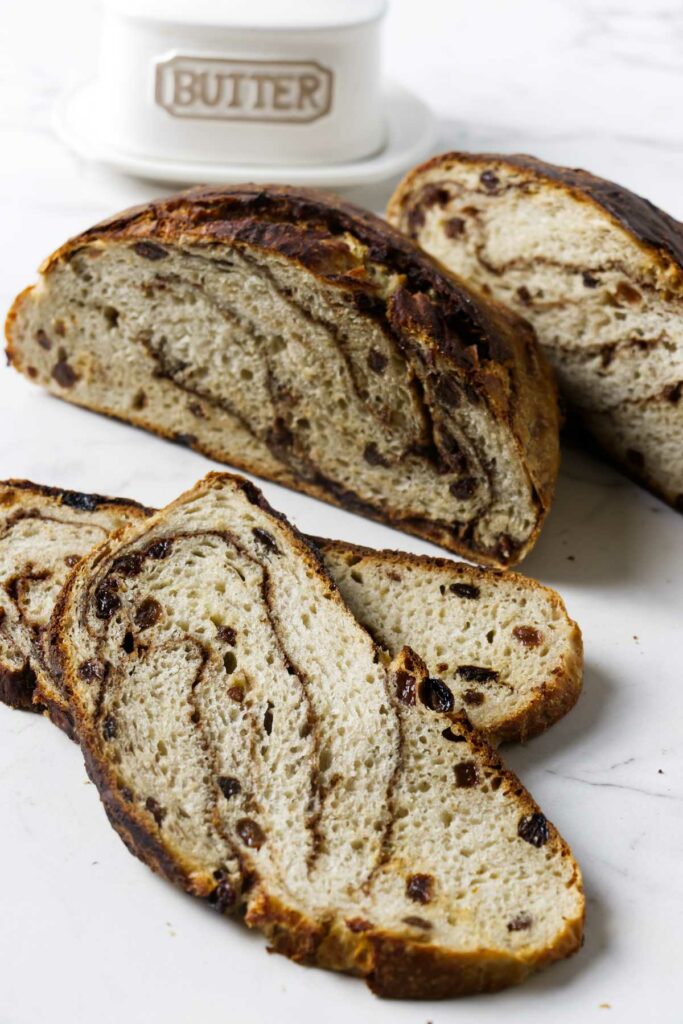
If you love cozy fall flavors, try our Pumpkin Cinnamon Rolls next. They’re soft, spiced, and just as irresistible as this bread.
Here’s Why This No Knead Cinnamon Raisin Bread Recipe Works
No-knead: A short rest is all it takes. Just mix, wait an hour, and it’s ready to shape.
Swirl that stays put: Egg wash helps the cinnamon sugar cling to the dough, so the swirl holds tight and doesn’t separate.
Layered for impact: Rolling, brushing, and dusting the swirl in stages gives you even coverage and a swirls of cinnamon sugar.
Dutch oven = crust goals: Traps steam to help the bread rise tall with a chewy, golden crust. No fancy gear needed.
Want to see how I adapted my base Dutch oven bread into a cinnamon-swirl recipe? Check out my recipe testing notes.

If you’re into spiced, raisin-filled breads, don’t miss my whole wheat hot cross buns.
Recipe Tips
Soak the raisins: This keeps them juicy instead of chewy, and prevents them from sucking moisture out of the dough.
Don’t deflate: When shaping, stretch gently. Pressing too hard compresses the air pockets that formed in the proofing stage.
Use parchment: It’s your best friend for a smooth transfer into the screaming hot pot. No sticking, no burning your hands.
Tent with foil: Once the lid comes off, foil keeps the sugar-heavy crust from turning too dark before the center sets.
Cool completely: Slice too soon and you risk a gummy crumb or messy swirl. Let it rest so it slices clean and neat.
For a faster, no-rise sweet bread recipe with the same warm spice vibes, check out my cinnamon swirl apple bread.
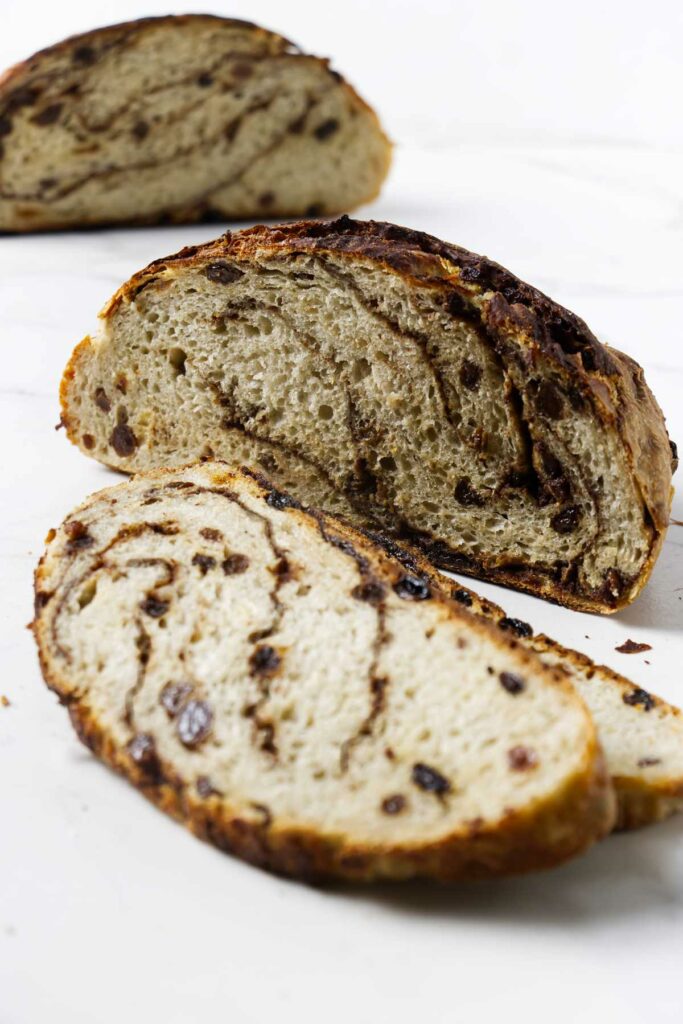
Dutch Oven Raisin Bread
No knead cinnamon raisin bread delivers bakery-level results with bare-minimum effort. You stir, you wait, you swirl, you bake, and what comes out is golden, fragrant, and deeply satisfying.
This loaf also makes a great base for my apple bread pudding. The cinnamon swirl and raisins add even more depth.
Pin this now to find it later!
Pin It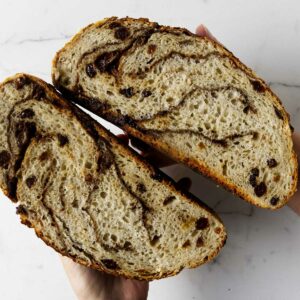
No Knead Cinnamon Raisin Bread
If you make this recipe, please leave a star rating and comment.
Ingredients
- ¾ cup raisins, 128 grams
- 3 ⅓ cups all-purpose flour, or bread flour; 400 grams
- 3 tablespoons granulated sugar
- 2¼ teaspoons instant yeast, 1 packet
- 1½ teaspoons salt, 9 grams
- 1 teaspoon ground cinnamon
- 1½ cups warm water, up to 100°F; 338 grams
- 3 tablespoons olive oil, or melted butter
Swirl Filling
- ⅓ cup brown sugar, packed
- 1 ½ teaspoons ground cinnamon
- 2 teaspoons all-purpose flour, helps prevent gaps
- 1 large egg, whisked with 1 tablespoon water
Instructions
Make the Dough
- Place the raisins in a bowl of hot water to soak for 5 to 10 minutes. Set aside.
- In a large bowl, whisk together the flour, sugar, yeast, salt, and cinnamon.
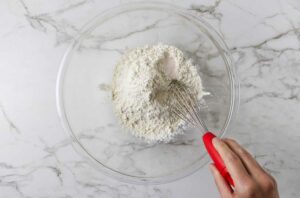
- Add the warm water and olive oil (or melted butter) and stir until fully combined into a sticky, shaggy dough.
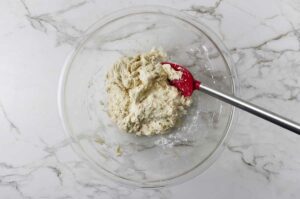
- Drain the raisins and fold them into the dough until evenly distributed.

- Cover with lightly oiled plastic wrap and let rise at room temperature for 1 hour or until doubled. It can take longer if your kitchen is cold.
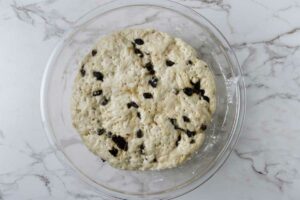
- After 40 minutes, place a 4–6 quart Dutch oven with lid on a baking sheet and set both in the oven to preheat to 450°F. The baking sheet acts as insulation to help prevent the bottom of the loaf from over-browning.
- In a small bowl, mix together the brown sugar, cinnamon, and flour for the filling. Lightly flour a large sheet of parchment paper and set aside.
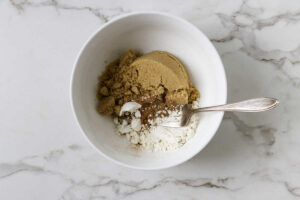
Shape with the Swirl
- Turn the dough out onto a lightly floured counter and gently stretch into a rough rectangle about 10×14 inches. Try not to press down and deflate the dough.
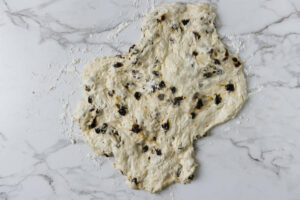
- Brush the surface lightly with the egg wash (this helps the filling adhere and reduces gaps).

- Sprinkle ⅔ of the cinnamon-sugar mixture evenly across the dough.
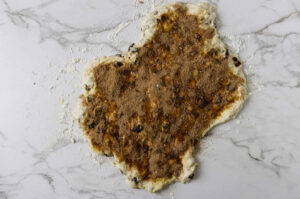
- Use a bench scraper to roll the dough into a log, then brush the top of the log with some egg wash.

- Sprinkle the rest of the cinnamon sugar over the dough then roll it into a ball. Place the ball of dough seam-side down on the prepared parchment.Dust lightly with flour, cover with plastic wrap, and let rest 15 to 20 minutes.
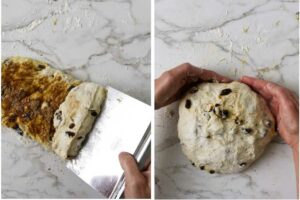
Bake the Bread
- Remove the Dutch oven from the oven. Uncover the dough and lift it with the parchment into the pot. Optional: mist with water and slash once across the top. Cover and bake for 20 minutes.
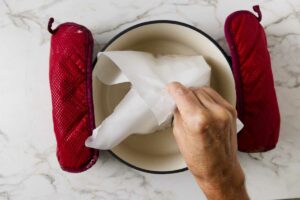
- After 20 minutes, remove the lid and loosely tent the bread with aluminum foil. This keeps the top from over-browning while the inside finishes baking. Continue baking for another 25 to 30 minutes, until golden brown and hollow-sounding when tapped. (Internal temp: 200–210°F.)

- Cool completely on a wire rack before slicing.
Notes
Nutrition
Nutrition information is automatically calculated, so should only be used as an approximation.
 Like this recipe? Rate & comment below!
Like this recipe? Rate & comment below!Recipe Testing Notes
This recipe started as a variation of my quick Dutch oven bread, with a few tweaks to make the swirl work. I adjusted the hydration and added a bit more flour to make the dough easier to handle when rolling the swirl. A splash of fat (olive oil or melted butter) softens and enriches the crumb.
The cinnamon swirl caused some trouble at first, pulling away and creating gaps during baking. Two fixes, both borrowed from King Arthur, made all the difference: brushing the dough with egg wash and adding a small amount of flour to the cinnamon sugar.
The egg helps the swirl stick, and the flour keeps the sugar from liquefying and separating as it bakes. Together, those tweaks keep the swirl tight.
One last note: this bread browns faster than my original Dutch oven bread, thanks to the added sugar. After a few too-dark tops, I started tenting it with foil once the lid came off. That simple step gives the crust time to finish baking without overdoing the color. The bottom can also darken more than usual, but placing the Dutch oven on a baking sheet helps insulate it and prevents over-browning.


